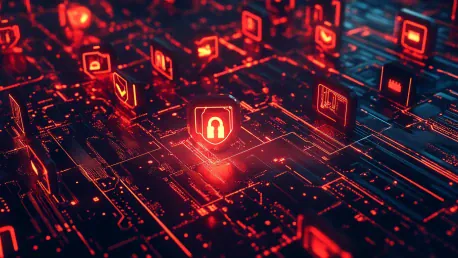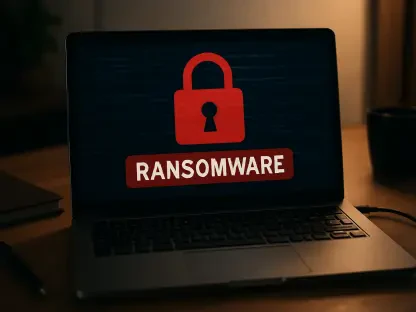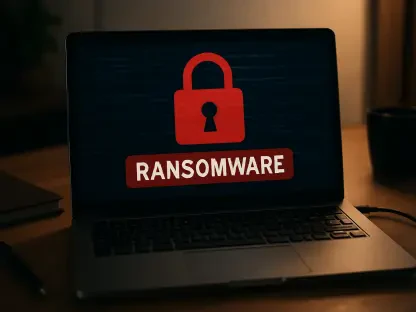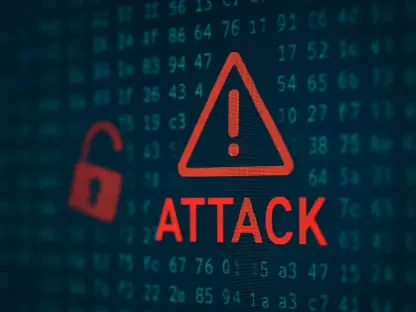In this week’s Cybersecurity Newsletter, we delve into the latest updates from the dynamic world of cybersecurity. This edition provides an in-depth analysis of current threats, including advanced ransomware attacks and the increasing role of state-sponsored cyber activities on global security. Additionally, we discuss how emerging technologies like artificial intelligence (AI), machine learning (ML), and quantum computing are reshaping the cybersecurity landscape. Key topics include proactive strategies to enhance organizational defenses, recent regulatory developments, and how various industries are addressing critical cybersecurity challenges.
Emerging Threats
Recent analysis of over one million malware samples highlights attackers’ growing use of the Application Layer of the OSI model to conduct stealthy Command-and-Control (C2) operations. Malicious actors exploit trusted protocols such as HTTP/S, DNS, and SMTP to embed harmful activities within legitimate traffic, thereby evading traditional detection mechanisms. To counter these sophisticated threats, the use of advanced tools like deep packet inspection and behavioral monitoring is crucial. Attackers are continuously refining their techniques, making it increasingly difficult for conventional security measures to detect and neutralize malicious activities. The constant evolution of malware underscores the need for organizations to adopt multi-layered security approaches that incorporate real-time threat intelligence and proactive security controls.
The release of DeepSeek-V3 has triggered a surge in LLMjacking attacks, where cybercriminals steal API keys to exploit large language models (LLMs). Unauthorized access is monetized through reverse proxy systems, resulting in significant financial losses for victims. Organizations are advised to secure API keys and closely monitor account activity. The pace at which new attack vectors are being discovered emphasizes the importance of continuous monitoring and timely updates to security protocols. As cybercriminals become more sophisticated, the need for robust and adaptive defense mechanisms becomes even more critical. Securing API keys and other access points can significantly reduce the surface area for potential attacks, thereby protecting valuable digital assets from falling into the wrong hands.
Seasonal Cyberattacks and Phishing Campaigns
Threat actors are exploiting Valentine’s Day-themed domains to launch phishing and malware campaigns. A recent observation indicates a 39% increase in such domains, with one in eight being malicious or suspicious. Users should verify domain legitimacy and avoid unsolicited links during seasonal events. Cybercriminals often capitalize on seasonal events to trick unsuspecting users into divulging sensitive information. The surge in holiday-themed attack vectors highlights the importance of heightened awareness during these periods. Users should exercise caution when interacting with holiday-related content and always verify the source before engaging with any links or downloads.
A sophisticated phishing campaign is leveraging Webflow’s CDN and fake CAPTCHA pages to steal sensitive financial information. Victims are lured via search engine results into providing personal details. Caution is advised when interacting with unfamiliar websites or documents found online. Phishing campaigns have become increasingly sophisticated, often mimicking legitimate websites and services to deceive users. The use of fake CAPTCHA pages and other social engineering techniques further complicates the task of distinguishing between genuine and malicious content. Organizations should implement advanced phishing detection mechanisms and educate users on recognizing the common signs of phishing attempts.
Storm-2372 attackers are exploiting device code authentication to steal tokens, granting unauthorized access to accounts without passwords. Organizations should enforce multi-factor authentication (MFA) and educate users on recognizing phishing attempts. The rapid evolution of phishing methodologies underscores the need for continuous security awareness training. Additionally, implementing MFA can provide an additional layer of security, making it more challenging for attackers to gain unauthorized access to sensitive accounts.
State-Sponsored Cyber Activities
The China-based Winnti Group has launched the “RevivalStone” campaign, targeting Japanese organizations in the manufacturing and energy sectors with advanced malware and WebShells. These attacks underscore the need for robust cybersecurity defenses against state-sponsored threats. State-sponsored attacks are often highly sophisticated and well-funded, making them particularly challenging to defend against. The competitive nature of the manufacturing and energy sectors makes them prime targets for cyber-espionage activities. Organizations must invest in comprehensive security measures, including threat intelligence and incident response capabilities, to effectively counter these advanced threats.
The North Korean hacking group Emerald Sleet is using spear-phishing emails to trick victims into running PowerShell commands as administrators. This installs malicious tools for espionage and data theft. Training users to recognize phishing attempts and deploying advanced anti-phishing solutions are essential defenses. State-sponsored hacking groups often employ social engineering tactics to gain access to high-value targets. Spear-phishing campaigns are tailored to specific individuals, making them difficult to detect and mitigate. Enhancing user awareness and deploying sophisticated anti-phishing technologies can significantly reduce the risk of falling victim to these targeted attacks.
The Chinese state-sponsored group Salt Typhoon exploited over 1,000 unpatched Cisco devices using privilege escalation vulnerabilities (CVE-2023-20198 and CVE-2023-20273). These attacks emphasize the need for immediate patching and enhanced network security measures. Unpatched vulnerabilities provide an easy entry point for attackers to compromise critical systems and networks. Timely application of security patches and regular system audits are crucial in mitigating the risk posed by state-sponsored actors. By maintaining up-to-date security postures and implementing stringent access controls, organizations can better defend against these sophisticated cyber threats.
Critical Vulnerabilities and Exploits
A severe vulnerability (CVE-2024-52875) in GFI KerioControl firewalls allows remote code execution (RCE) through unauthenticated URI paths. With over 12,000 unpatched systems globally, organizations are urged to apply updates promptly and monitor for unusual activity. The discovery of such critical vulnerabilities highlights the importance of regular vulnerability assessments and prompt remediation actions. Organizations must stay vigilant and prioritize patch management to prevent potential exploits that could lead to significant security breaches.
A critical flaw (CVE-2024-53704) in SonicWall firewalls is being exploited to bypass authentication and hijack SSL VPN sessions. SonicWall has released patches, and organizations are advised to update immediately to mitigate these risks. The exploitation of firewall vulnerabilities can have severe implications for network security, allowing unauthorized access and potential data breaches. Keeping firewall systems updated and monitoring for signs of suspicious activity are essential practices in maintaining a secure network environment.
Palo Alto Networks has patched a high-severity authentication bypass vulnerability (CVE-2025-0108) in PAN-OS software that attackers are actively exploiting. Organizations must update affected versions immediately and restrict management interface access to trusted IPs. Authentication bypass vulnerabilities are particularly dangerous as they can lead to unauthorized access and control over critical systems. Ensuring that management interfaces are only accessible from trusted networks and applying security updates in a timely manner are crucial steps in mitigating these risks.
Data Breaches and Financial Losses
The Ethereum-based DeFi protocol zkLend suffered a breach, losing 3,300 ETH ($8.5 million). The company has offered a bounty for the return of funds but may involve law enforcement if the attacker does not respond. This incident highlights the risks associated with DeFi platforms. The decentralized nature of DeFi platforms makes them attractive targets for cybercriminals due to the potential for significant financial rewards. Implementing robust security measures and conducting regular audits can help mitigate these risks. Additionally, engaging with law enforcement and offering bounties can be effective in recovering lost assets and deterring future attacks.
Hackers are using the open-source Pyramid pentesting tool to establish stealthy command-and-control (C2) channels, bypassing endpoint detection systems. Pyramid’s lightweight HTTP/S server capabilities make it a favored choice for malicious actors seeking to evade detection during post-exploitation activities. The misuse of legitimate pentesting tools for malicious purposes underscores the need for vigilant monitoring and advanced detection capabilities. Organizations should employ comprehensive endpoint detection and response (EDR) solutions to identify and mitigate potential threats early in the attack lifecycle.
A malware campaign is using Microsoft Outlook as a communication channel through the Graph API, employing tools like PATHLOADER and FINALDRAFT for espionage and data exfiltration. Organizations should monitor Graph API usage and implement stringent access controls. The exploitation of common communication channels like Microsoft Outlook highlights the need for robust security measures across all facets of an organization’s digital infrastructure. By monitoring API usage and employing strict access controls, organizations can better protect sensitive data from being exfiltrated through seemingly benign channels.
Vulnerability News
In this week’s Cybersecurity Newsletter, we explore the latest developments in the ever-evolving field of cybersecurity. This issue presents a comprehensive analysis of current threats, focusing on sophisticated ransomware attacks and the growing impact of state-sponsored cyber activities on global security. Additionally, we examine how emerging technologies like artificial intelligence (AI), machine learning (ML), and quantum computing are transforming the cybersecurity landscape.
Key topics covered include proactive strategies to bolster organizational defenses, recent regulatory changes, and the approaches being taken by various industries to tackle critical cybersecurity challenges. We also look at real-world case studies to illustrate how different sectors are implementing these strategies to defend against cyber threats. Furthermore, we delve into the importance of staying ahead of these threats by continuously updating defense mechanisms and investing in cutting-edge technology.
The newsletter emphasizes the need for organizations to be vigilant and adaptive in order to protect their assets, data, and overall security posture. By understanding the current trends and technologies, stakeholders can better prepare for and respond to the evolving threat landscape. Stay informed and proactive to ensure robust cybersecurity measures are in place.









